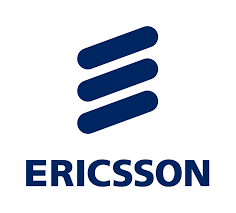 Speaking at NAB, Ericsson researcher Lukasz Litwic discussed the Implications of High Dynamic Range on the Broadcast Chain for HD and Ultra-HD Content. The talk described the need and impact of new Electro-Optical and Opto-Electrical Transfer Functions (EOTF, OETF) on the efficiency of video compression used for transmission of UHD content to user displays. Implications on the existing broadcast chain were discussed, such as an increase in bitrates required to transmit HDR services and the compatibility of HDR services with existing SDR displays. We summarize his talk here.
Speaking at NAB, Ericsson researcher Lukasz Litwic discussed the Implications of High Dynamic Range on the Broadcast Chain for HD and Ultra-HD Content. The talk described the need and impact of new Electro-Optical and Opto-Electrical Transfer Functions (EOTF, OETF) on the efficiency of video compression used for transmission of UHD content to user displays. Implications on the existing broadcast chain were discussed, such as an increase in bitrates required to transmit HDR services and the compatibility of HDR services with existing SDR displays. We summarize his talk here.
UHDTV specifications define 10-bit sample bit depths as the minimum data quantization values. UHDTV also has an expanded color gamut, or space, compared to that defined for HDTV. Current UHDTVs do not support the full BT.2020 color gamut, but each new generation of UHDTVs incorporate improvements in color space.
It is well-known that the human visual system (HVS) exhibits a dynamic range of perception that runs from a dark luminance value of 10-4 cd/m² (or “nits”) to a very bright 105 cd/m². For this reason, the video production environment since the early introduction of CRTs has typically assumed a peak white level of 100 cd/m². But displays are now pushing that envelope, with a higher brightness needed to operate in a typical viewing environment. State-of-the-art displays can now produce a peak output in the range of 300-1,200 cd/m²; displays using quantum-dots were shown at CES this year, claiming a maximum brightness at that high end. TV production standards are clearly in need of updating, and various SDOs are now doing just that:
- The Society of Motion Picture and Television Engineers (SMPTE) Study Group on HDR is studying production and delivery workflow issues.
- Both SMPTE and the ITU-R are developing OETF and EOTF transfer functions for HDR video systems.
- MPEG has issued a Call for Evidence on HDR to determine if the HEVC standard needs to be updated.
- The Digital Video Broadcast project (DVB) Commercial Module on UHDTV is currently discussing HDR for deployments beyond 2016/2017.
- The Blu-ray Disc Association (BDA) has defined enhanced dynamic range in its upcoming UHD spec.
- The HDMI Forum and the Consumer Electronics Association are defining an extension to HDMI (CEA-861.3) which includes HDR metadata extensions.
Additional research is ongoing in the area of HDR, including system characteristics and how to best utilize the feature. OETF and EOTF are essentially non-linear transfer characteristics that map the luminance of a captured scene to electronic media and then from media to a display. Ideally, the transfer curves were developed to optimize the use of the dynamic range available from the medium. This process has been known as gamma correction, where linear R,G,B tristimulus values are transformed into non-linear R’G’B’ quantities. When video processing became digital, curves were then defined to be applied to the quantized levels of encoding, not always with ideal results. The OETF for HD was included in ITU-R BT.709 and then in Recommendation ITU-R BT.2020 for UHD.
The Combination of OETF and EOTF results in an overall transfer characteristic often called system gamma. Unfortunately, gamma historically has been applied in an inappropriate way (i.e, after the RGB-to-YUV matrixing operation), resulting in a violation of the constant luminance principle. In addition, when the curves developed for 8- or 10-bit luminance are applied to HDR signals, the levels needed to represent low luminance signals result in wasted bits for high luminance values, resulting in visible banding artifacts.
For these reasons, alternative transfer functions have been proposed for encoding and rendering HDR signals, such as SMPTE ST-2084, which targets an absolute brightness of 10,000 nits, and by BBC, which aims at somewhat less than that. Nonetheless, the new non-linearity characteristics require a higher bit depth for faithful reproduction, which in turn creates issues when both SDR and HDR signals are handled in today’s video plants.
Ericsson (and other companies, such as Dolby and Technicolor) are now studying different options of dealing with HDR in the production environment, including the notion of multi-layer streams, where both an SDR and enhancement-to-HDR stream can be compatibly manipulated within the plant.
Ericsson’s findings show that when the constant luminance transformations were applied to ST.2084 together with using u’v’ chromacity, no visible artifacts were obtained compared with the non-constant luminance case. They also believe that the same findings would apply to constant luminance processing with the BBC transfer function. However, while constant luminance processing solves the problem of chroma subsampling artifacts, it also changes the efficiency of compression encoding, according to Ericsson.
Solutions for system optimization remain in the research phase, said Litwic, who added that the full effects of different mapping schemes are still not well understood. – Aldo Cugnini
For more on the issue of artefacts see this article (Ericsson Wins Best Paper Award for HDR Compression Analysis) based on the paper presented.

